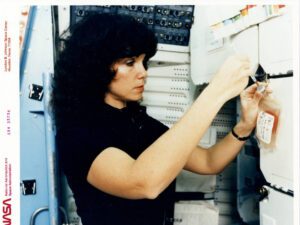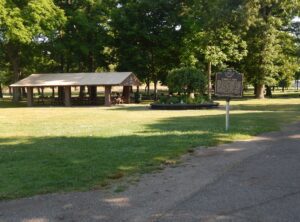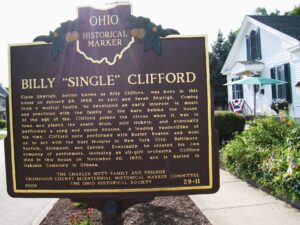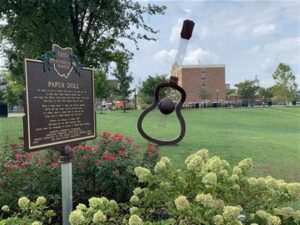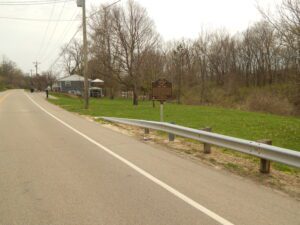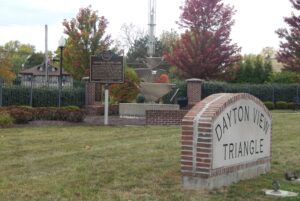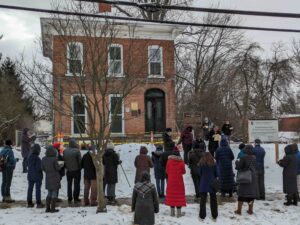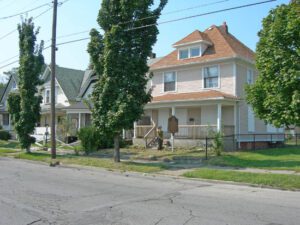, OH
“The future doesn’t belong to the fainthearted; it belongs to the brave. The Challenger crew was pulling us into the future and we’ll continue to follow…” President Ronald Reagan
As the second American woman in space, Judith Resnik (1949-1986) paved the way for the future of women in space exploration. A gifted science and music student and valedictorian of Firestone High School’s class of 1966, she earned a doctorate in Electrical Engineering from the University of Maryland in 1977 and was accepted by the National Aeronautics and Space Administration (NASA) as an astronaut candidate in 1978. Her first flight was on the inaugural mission of the Space Shuttle Discovery in 1984. Resnik was aboard the Space Shuttle Challenger as a mission specialist on January 28, 1986, when it exploded just 73 seconds after lift-off from the Kennedy Space Center in Florida. All seven crewmembers died in the explosion.
, OH
Nimisilla Park was established in 1894. Prior to its founding, the site was the location of the county fair from 1859 to 1893. Throughout its history, Nimisilla Park hosted horse races, live music, soldier reunions, and a zoo, among other events. Prominent political figures, such as Rutherford B. Hayes, James A. Garfield, William McKinley, and Eugene V. Debs, made speeches at the park. In 1918, Debs delivered a famous anti-war speech for which he was arrested and jailed. As of 2016, the park continues to serve as a gathering place for the community.
, OH
Clyde Shyrigh, better known as Billy Clifford, was born in this house on January 24, 1869, to Levi and Sarah Shyrigh. Coming from a musical family, he developed an early interest in music and practiced with the family in the barn behind the house. At the age of ten, Clifford joined the circus when it was in town and played the snare drum, sold tickets, and eventually performed a song and dance routine. A leading vaudevillian of his time, Clifford once performed with Buster Keaton and went on to act with the best troupes in New York City, Baltimore, Norfolk, Richmond, and Europe. Eventually, he created his own company of performers, including an all-girl orchestra. Clifford died in this house on November 20, 1930, and is buried in Oakdale Cemetery in Urbana.
, OH
John Stewart Black (1891-1936) was a Vaudeville performer and songwriter who penned the classic “Paper Doll.” He is also remembered for “Dardanella,” which he called his “gift to the musical world.” “Dardanella”, recorded by the Ben Selvin Novelty Orchestra, debuted in 1919 and is believed to have sold more than five million copies. In 1942, the Piqua-born Mills Brothers recorded Black’s tune “Paper Doll.” It sold over 6 million records, was number one on the Billboard charts for twelve weeks in 1943 and became one of the most memorable records of the World War II era. Many artists, including Frank Sinatra and Bing Crosby, recorded “Paper Doll” and the song was inducted into the Grammy Hall of Fame in 1998.
, OH
Thomas Burk Sr. purchased a quarter section of federal land here in 1804. A school house was erected on this purchase in 1809. That same year, a road from Williams’ Mill (Millville) was blazed and a saw mill was built on Indian Creek west of this marker. Obadiah Welliver opened a tavern on his purchase in 1812. Burk sold his grist mill in 1818 and it is thought that the hamlet around this mill was called Dogtown because of a vicious dogfight there. In 1825, Reily Post Office was established at Welliver’s Tavern. That year a woolen mill with textile production machinery was built by Elias Sayres, near the saw mill. Multi-millionaire Elias Jackson (“Lucky”) Baldwin (1828-1909), the founder of Santa Anita Racetrack near Los Angeles, was born here.
, OH
“…this was the area that supported us, which made us…” –Roger Troutman (1951-1999). Hits by Roger and Zapp, such as “More Bounce to the Ounce” (1980) and the albums Zapp (1980), The Many Facets of Roger (1981), and Zapp II (1982) made Troutman Sound Labs possible. The studio was finished in 1983. The music produced here included the Gold-selling album New Zapp IV U (1985), Shirley Murdock’s self-titled Gold album (1987), and Roger’s “I Want to Be Your Man,” which was #1 on Billboard’s Hot R&B/Hip Hop chart and #3 on the Pop chart in late 1987. (Continued on other side)
, OH
The Wilson Bruce Evans House, 33 East Vine Street, is a rare example of a residence built and occupied by an African American abolitionist and Underground Railroad operative. Free-born in North Carolina, Wilson Bruce Evans (1824-1898) moved to Oberlin in 1854. A skilled cabinetmaker, he opened a carpentry shop with his brother, Henry (1817-1886). Together they completed the original house by 1856. At the center of Oberlin’s interracial antislavery politics, Evans defied the Fugitive Slave Act of 1850, and was indicted for his part in the 1858 Oberlin-Wellington Rescue. During the Civil War, Evans enlisted in the predominantly white 178th O.V.I., serving August 1864-June 1865. The Wilson Bruce Evans House was added to the National Register of Historic Places in 1980, and named a National Historic Landmark in 1997. (Continued on the other side)
, OH
Art Tatum was born in Toledo on October 13, 1909, the son of Arthur Tatum, Sr. and Mildred Hoskins Tatum. Despite being blind in one eye and only partially sighted in the other, he became one of the greatest jazz pianists of his era. To deal with his sight disability, he attended the Ohio State School for the Blind in Columbus from 1918-1920. He came from a musical family and had some formal training at the Toledo School of Music, but was largely self-taught. Influenced by famed Fats Waller, Tatum began playing his music on a local radio station at age 18 and then lived in Chicago, New York City, Cleveland, and Los Angeles, playing and recording extensively both as a soloist and in small groups. His ability to improvise set him apart as a musical genius. Tatum died in November 1956 and was named to the Jazz Hall of Fame in 1983.


